Good Morning All..
Potatoes (Solanum tuberosum) are one of the world’s most widely cultivated and consumed crops, prized for their versatility, high energy content, and ease of growth. Originally native to the Andean region of South America, they are now grown in various climates across the globe. The cultivation methods of potatoes have evolved over centuries, leading to improved yield and quality. In addition to being a staple food, potatoes are rich in nutrients and provide a wide range of health benefits. This description delves into the methods of potato cultivation and the nutritional properties of potatoes.
Potato Cultivation Methods
Soil Preparation and Site Selection
Potatoes require well-drained, loose, and fertile soil for optimal growth. Before planting, farmers typically prepare the soil by tilling it to a depth of 8–12 inches to break up any compacted layers and improve root penetration. It is crucial to select a site that is not prone to waterlogging, as potatoes are susceptible to diseases like blight and rot when grown in waterlogged conditions. Ideally, potatoes should be planted in slightly acidic soil with a pH level between 5.5 and 6.5.
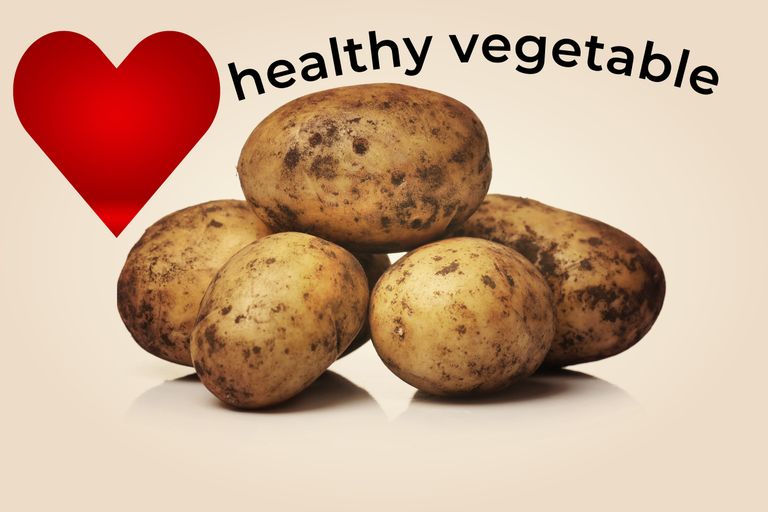
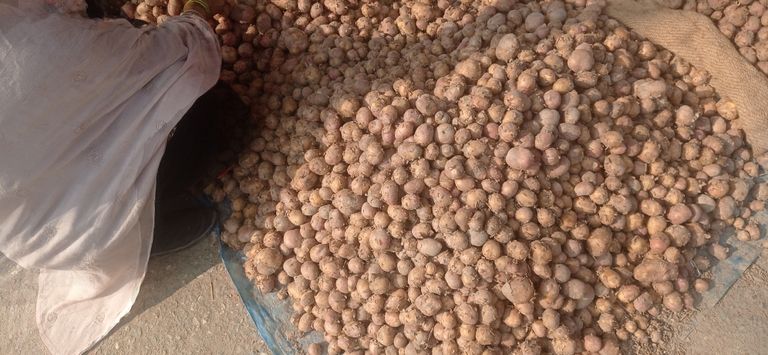
Seed Potato Selection
Unlike many crops that are grown from seeds, potatoes are propagated using seed potatoes, which are actually whole or cut tubers. Seed potatoes should be certified disease-free and preferably selected from a healthy crop grown the previous season. These tubers are typically cut into pieces, each containing one or two “eyes” (small buds), which will sprout and develop into new plants. Seed potatoes are usually pre-sprouted in a cool, dry location for 1–2 weeks before planting.
Planting
Potatoes are usually planted in rows or ridges. In the case of row planting, the seed potatoes are spaced 12 inches apart, and the rows themselves are typically 2–3 feet apart. This spacing allows for proper air circulation and sunlight penetration, both essential for healthy growth. In the ridge system, the seed potatoes are planted in trenches that are later hilled up with soil to promote tuber growth and prevent exposure to sunlight, which can cause potatoes to turn green and become toxic. The depth of planting is usually around 4–6 inches.
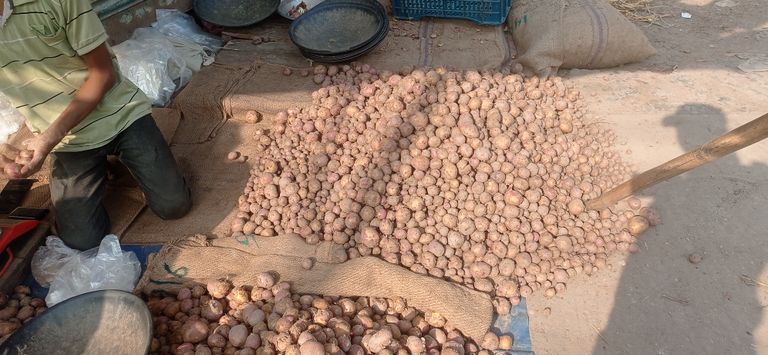
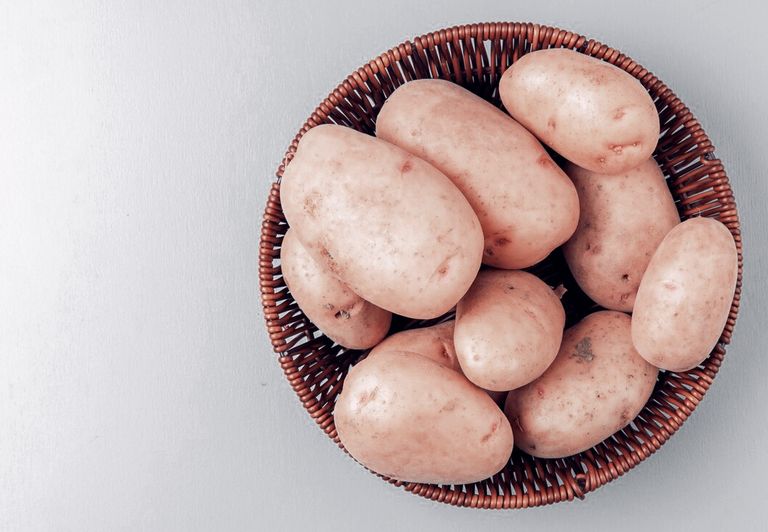
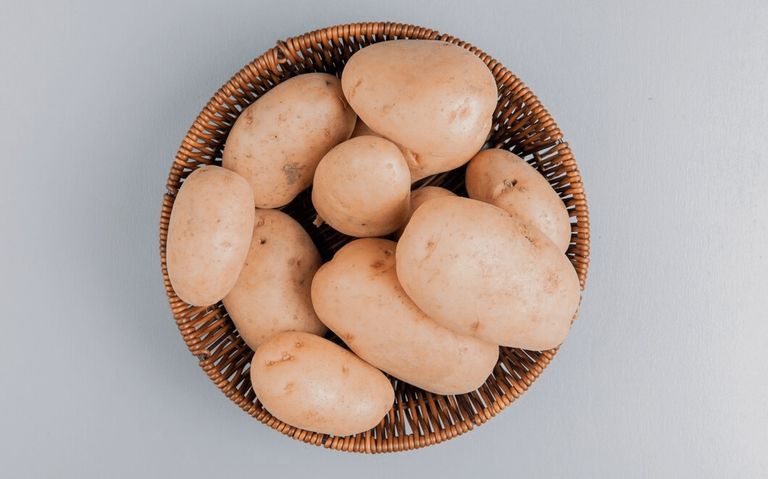
Watering and Irrigation
Potatoes require consistent moisture to develop properly, particularly during tuber formation. Farmers must ensure that the plants receive adequate water, typically 1–1.5 inches per week. However, over-watering or poor drainage can lead to root rot and fungal diseases. Drip irrigation or furrow irrigation are commonly used methods to provide moisture while minimizing water waste.
Fertilization
Potatoes are nutrient-intensive crops, and to ensure optimal growth, they require adequate levels of nitrogen, phosphorus, and potassium. A balanced fertilizer, applied at planting and again during tuber formation, provides the necessary nutrients. Additionally, the use of organic compost and crop rotation techniques helps improve soil health and prevents the depletion of nutrients. Potatoes are often grown in rotation with other crops like legumes, which can fix nitrogen in the soil.
Pest and Disease Control
Potatoes are susceptible to various pests, including the Colorado potato beetle, aphids, and wireworms. Integrated pest management (IPM) strategies, which include the use of biological control agents, crop rotation, and chemical treatments, help keep pest populations in check. Diseases such as early and late blight, caused by fungal pathogens, can devastate potato crops. Preventative measures include the application of fungicides, proper spacing of plants to enhance airflow, and the removal of infected plant material.
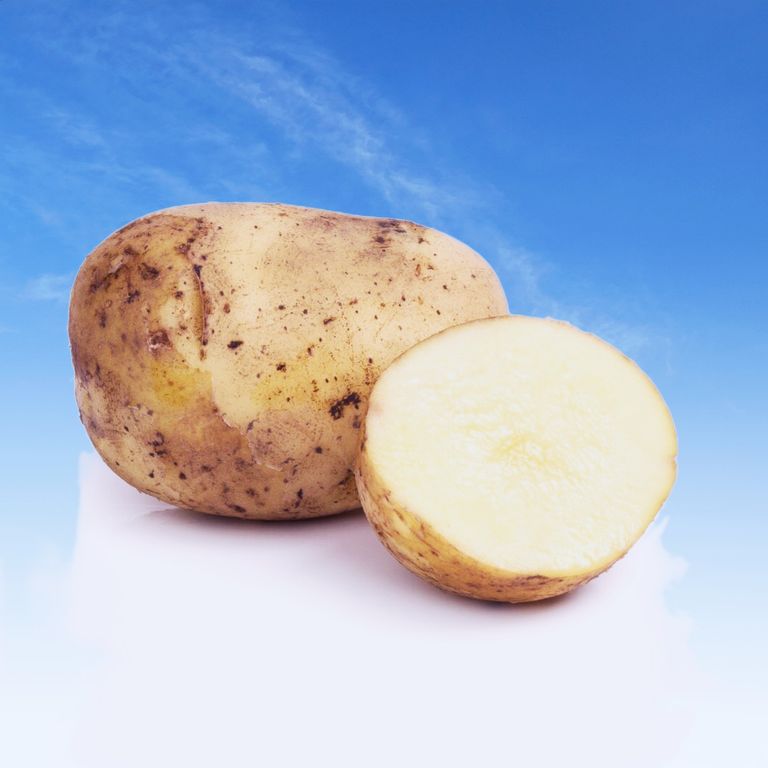
Harvesting and Storage
Potatoes are typically harvested when the plants' foliage begins to die back, signaling that the tubers have reached maturity. Harvesting is done carefully to avoid bruising the tubers. After harvesting, potatoes are cured by allowing them to rest in a cool, dark, and well-ventilated area for 1–2 weeks. This process helps to toughen the skin and improve storage life. Potatoes are usually stored in cool, dark conditions to prevent sprouting and the development of solanine, a naturally occurring toxin that forms in potatoes exposed to light.
Nutritional Properties of Potatoes
Potatoes are an excellent source of energy and contain a wide range of essential nutrients. The nutritional composition of a medium-sized, 5.3-ounce (150 grams) potato with skin includes approximately:
Calories: 110
Carbohydrates: 26 grams
Protein: 3 grams
Fat: 0 grams
Fiber: 2 grams
Vitamin C: 27 milligrams (about 45% of the daily recommended value)
Potassium: 620 milligrams (about 18% of the daily recommended value)
Carbohydrates
Potatoes are primarily composed of carbohydrates, making them an excellent energy source. Most of the carbohydrates in potatoes come from starch, which is broken down into glucose and used by the body for energy. This makes potatoes particularly beneficial for individuals who need quick, sustained energy.

Vitamins and Minerals
Potatoes are rich in vitamins, particularly Vitamin C, which plays an important role in immune function, wound healing, and the maintenance of skin and connective tissues. They are also a good source of Vitamin B6, which supports brain function and the production of red blood cells. The mineral content of potatoes includes significant amounts of potassium, which is vital for regulating blood pressure, muscle function, and fluid balance.
Fiber
Potatoes, particularly when consumed with the skin, provide a good amount of dietary fiber. Fiber is essential for digestive health, helping to regulate bowel movements and prevent constipation. It also contributes to heart health by helping to lower cholesterol levels and reduce the risk of cardiovascular disease.

Antioxidants
Potatoes contain various antioxidants, including flavonoids, carotenoids, and phenolic acids, which help to neutralize harmful free radicals in the body. These compounds may reduce the risk of chronic diseases, including certain cancers and heart disease.
video credit কৃষি ও খামার Youtube channel
Low Fat and Gluten-Free
Potatoes are naturally low in fat and free from gluten, making them suitable for a wide range of diets, including those for individuals with gluten sensitivity or celiac disease.
Potatoes are a valuable and highly nutritious crop, offering a combination of essential nutrients such as carbohydrates, vitamins, minerals, and fiber. Their cultivation requires careful attention to soil preparation, planting techniques, pest management, and harvesting practices. With their adaptability to various growing conditions and their ability to provide a substantial energy source, potatoes remain a cornerstone of global food security.